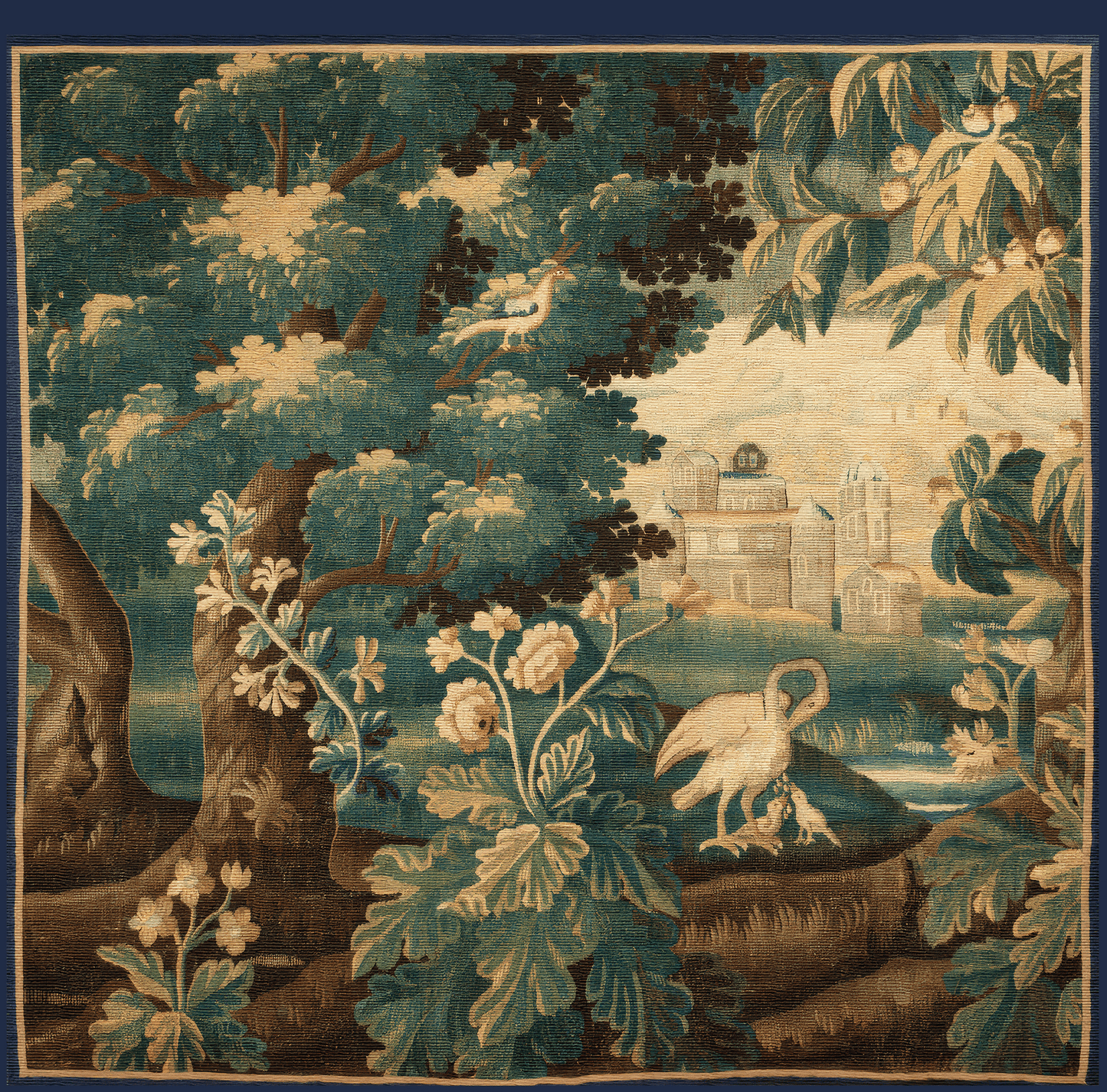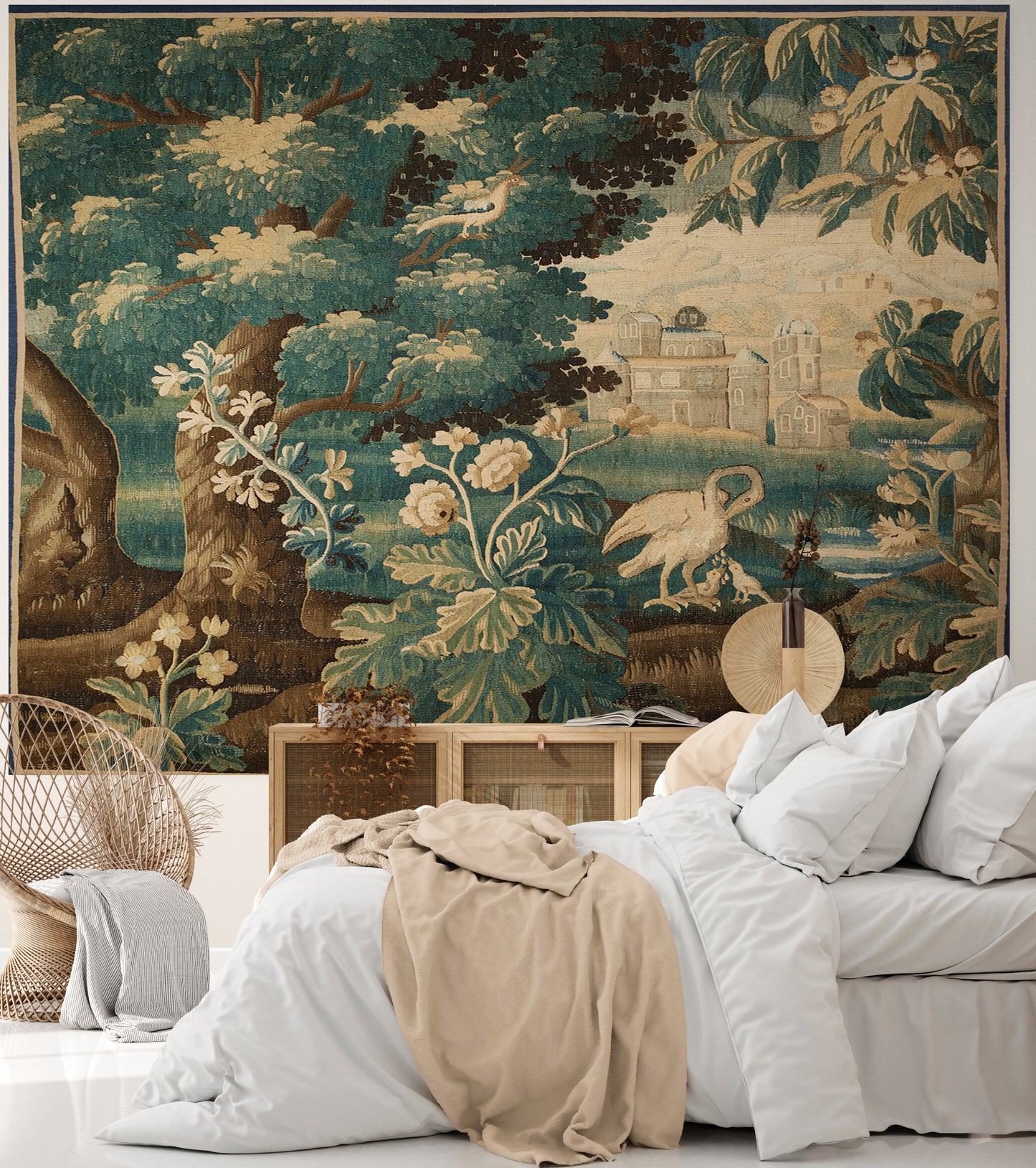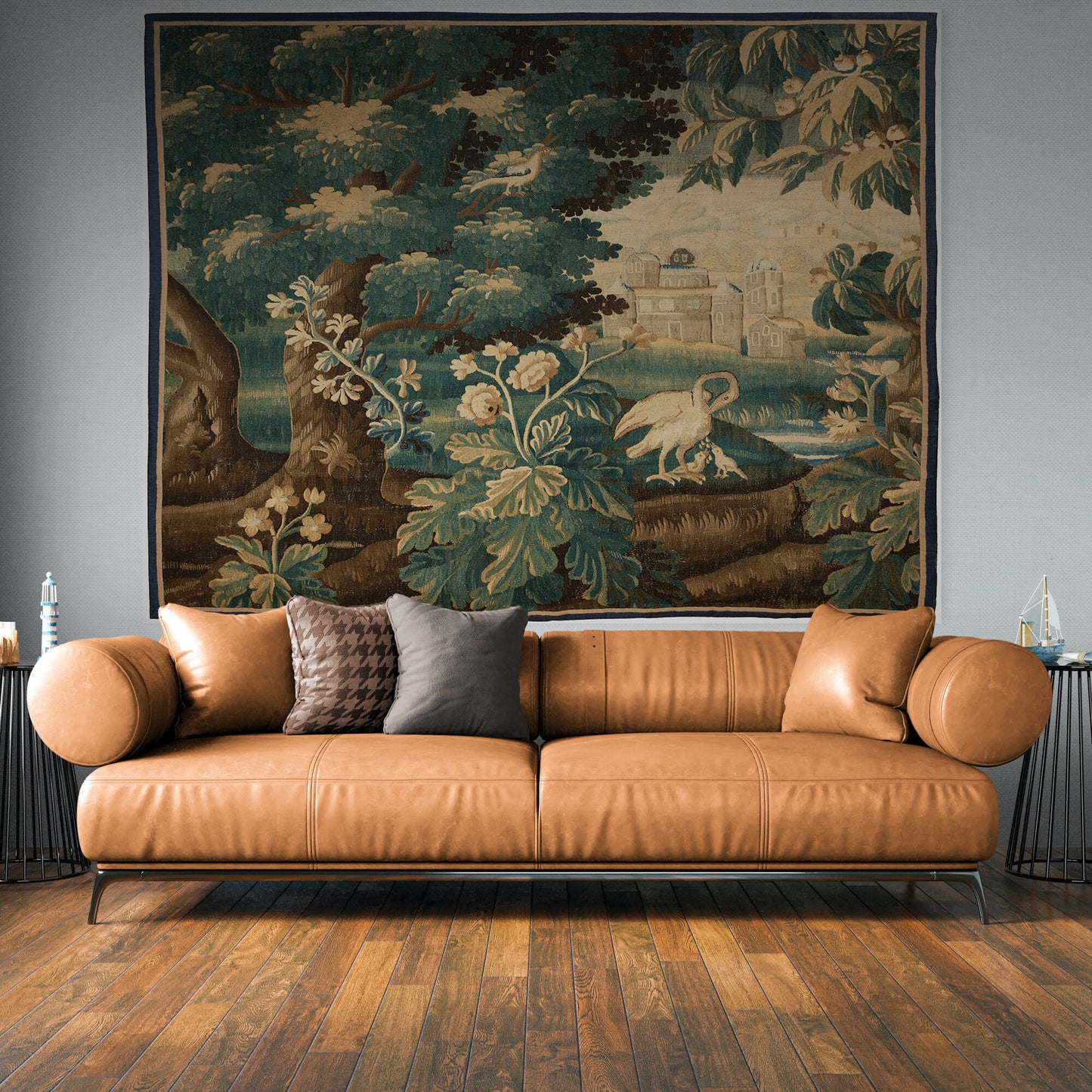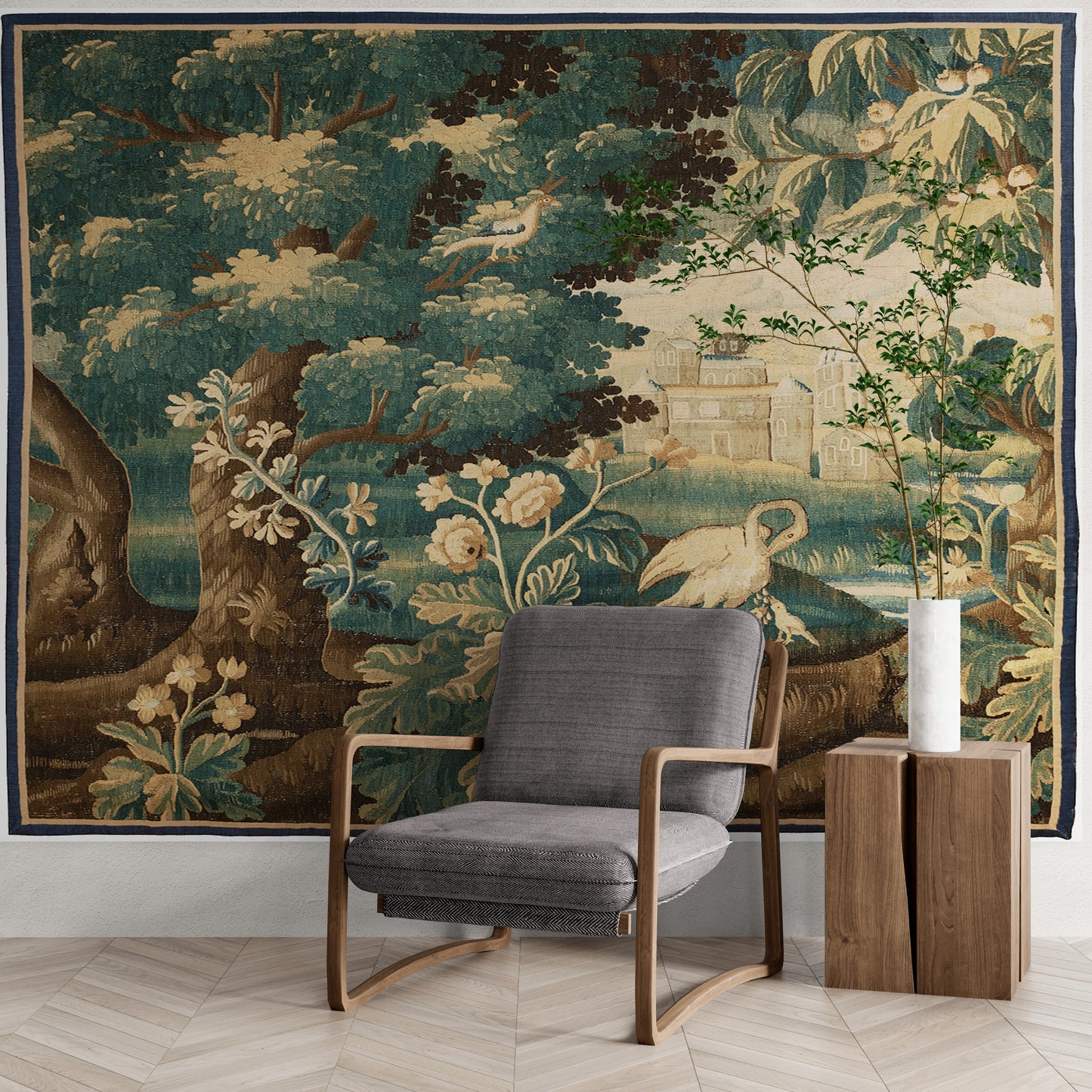NaN
/
of
-Infinity
Romantic English
An Exquisite Verdure Tapestry Decorative Arts RE627388
An Exquisite Verdure Tapestry Decorative Arts RE627388
Regular price
$247.00 USD
Regular price
Sale price
$247.00 USD
Unit price
/
per
Tax included.
Shipping calculated at checkout.
Couldn't load pickup availability
Gorgeous Verdure Choice of Woven Tapestry or Fabric Print RE627388
This verdure tapestry is a prime example of the exquisite craftsmanship and naturalistic themes that characterized many tapestries of the Renaissance and Baroque periods. Let's delve into the detailed aspects of this piece:
Imagery and Composition
Natural Elements
-
Trees and Foliage:
- The tapestry is dominated by lush, green foliage. The large tree on the left is rendered in various shades of green, suggesting depth and volume. The tree's canopy is full and dense, with leaves meticulously detailed to create a realistic effect.
- The undergrowth is depicted with equal care, featuring large, stylized leaves and delicate flowers in the foreground. These plants are rendered in a slightly lighter green, contrasting with the darker leaves of the trees.
-
Birds:
- Birds are a recurring motif in verdure tapestries, symbolizing the harmonious coexistence of nature. Here, a bird perches serenely in the tree, its form detailed enough to identify its species, though stylized in a manner typical of the period.
-
Animals:
- A striking feature is the crane located near the bottom right of the tapestry. This bird is depicted in the act of fishing, adding a dynamic element to the otherwise tranquil scene. The crane's elegant form and detailed feathers showcase the weaver's skill in capturing the essence of wildlife.
-
Flowers:
- The tapestry includes a variety of flowering plants. The flowers are depicted in full bloom, their petals intricately woven to create a sense of three-dimensionality. This attention to detail reflects the importance of botanical accuracy and aesthetic beauty in verdure tapestries.
Background Elements
Architectural Structures
- The background features a charming architectural vignette, possibly representing a distant manor or palace. These buildings are rendered in a lighter palette, suggesting distance and enhancing the perspective within the tapestry.
- The buildings have characteristic domes and turrets, indicating a European architectural style. The structures add a narrative element, hinting at human presence and civilization amidst the natural setting.
Artistic Techniques
Weaving Techniques
-
Color Palette:
- The verdure tapestry utilizes a predominantly green and brown color scheme, typical of this genre. The various shades of green create a lush, vibrant landscape, while the browns provide grounding and structure.
- Highlights of white and pale colors are used to depict flowers, birds, and architectural details, providing contrast and drawing the viewer's eye to these focal points.
-
Texture and Detail:
- The weaver has employed a variety of weaving techniques to create texture and depth. The foliage appears almost three-dimensional due to the varying shades and the detailed leaf patterns.
- The birds and animals are given a sense of movement and life through the use of fine detailing and subtle color gradations.
Cultural and Historical Context
Verdure Tapestries
- Verdure tapestries, also known as garden tapestries, were immensely popular in the 16th and 17th centuries. They were often used to decorate the walls of grand homes and castles, bringing the beauty of nature indoors.
- These tapestries were typically produced in renowned weaving centers such as Flanders and France. They were prized for their ability to depict elaborate natural scenes with a high degree of realism and artistry.
Symbolism
- The verdant landscapes and the presence of birds and animals often symbolized peace, prosperity, and harmony with nature. They served not only as decorative pieces but also as visual representations of an idealized, bucolic world.
In summary, this verdure tapestry is a beautiful and intricate piece of art, capturing the essence of nature with meticulous detail and artistry. It reflects the high level of craftsmanship and the aesthetic values of the period in which it was created, making it a valuable and evocative historical artifact.






























